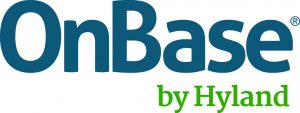White House memorandum OMB 17-22 challenges federal agencies to “create a lean, accountable, more efficient government” by scrutinizing processes, eliminating redundant programs and reducing the federal workforce. What’s more, it requires a plan for these initiatives in less than three months.
In a recent post, we discussed agencies’ need to adopt enterprise content management (ECM) strategies to reach those goals on a short timeline. Technology can be a key enabler to meeting efficiency objectives without cutting personnel or increasing budgets. Specifcally, ECM provides agencies with a strategy to minimize workloads, increase efficiencies, and better serve citizen needs.
However, with legacy systems, organizational siloes, and ineffective workflows already in the mix, it might be unclear where to start or how to adopt ECM. The best way to start your ECM journey is through an assessment of how well your agency captures information today. Experts at Hyland, who provide the ECM platform OnBase, recommend starting by asking yourself a series of questions including:
- Are we capturing all documents and information as efficiently and as early in the process as possible?
- How are we handling intake, document routing, assignments, exceptions, revisions, signatures and other notifications?
- How are we providing appropriate access to everyone who needs it?
- Is content connected to solutions that contain related information?
- How do we measure process efficiency?
- Are we meeting compliance and records requirements?
The answer to the question if you’re capturing your content efficiently, especially for federal agencies, is likely “no.” In many cases, agencies discover their information lies in the black holes of government because forms, applications and other documents continue to be filed on paper. That’s a crucial impediment to effective ECM and to meeting OMB’s 17-22 mandate because paper-based systems:
- Accrue significant resource costs for printing, copying and filing
- Increase workloads with manual data entry
- Require distributed staff across multiple physical locations
- Prevent the creation of a single, authoritative source of information
For ECM to be effective, any critical documentation should be accessible from a single, digital location. Therefore, the first step in any plan to meet federal reform should be going paperless. Start by implementing tactics to digitize your paper-based documents including document scanning, moving to electron forms, and integrating your information systems with your mailing services like Outlook.
Then, consider your information management. Effective ECM requires minimal data entry, with most content automatically classified and indexed after it’s captured by the system. That allows government workers to focus on mission-critical tasks, rather than manually copying and filing documents.
Next, consider how you’re providing appropriate access to everyone who needs it. ECM platforms can create a single system of record, where any relevant information can be quickly accessed and used.
Whenever possible, consider how you can expand the amount of information in the system. If you configure your ECM to connect with other data sources within your IT environment, you can dramatically enhance the wealth of information you provide in one place.
Plus, if you add web-based searching to your platform, your information can be convenient searched by anyone with internet access. In many cases, that enables citizens to access content without government worker intervention. It increases transparency – a growing demand among constituents – while also simplifying service delivery.
At the same time, public servants have an internal database from which to pull critical information to serve citizens and get their own tasks accomplished quickly. That single, integrated system allows federal agencies to achieve:
- Decreased time to complete processes because staff aren’t shifting between systems in search of data
- Eliminated training time because employees work with a single system they already know
- Pre- populated electronic forms feed workflows, reducing time and avoiding duplicative data entry
However, efficiency doesn’t stop there with ECM. Consider whether you currently have a real-time view of your processes. You likely don’t. However, a connected ECM system offers full process visibility, because all an agency’s critical information flows through the single platform. From one dashboard, you can monitor processes, map projects, and identify bottlenecks. Then, you can start making better decisions about how resources are allocated, how processes are organized, and how employees are working.
Finally, make sure that you consider security in your efficiency journey. Again, ECM can play a critical role by encrypting files, create back-ups for disaster recovery, and automatically classifying documents. It can also remove the error-prone manual processes of file archiving tasks, which saves employees time and resources.
Through every step of the ECM journey, agencies will realize efficiency benefits. Ultimately, ECM saves agencies money, reduces staff workloads, and improves processes – the very objectives set by OMB 17-22.






Leave a Reply
You must be logged in to post a comment.